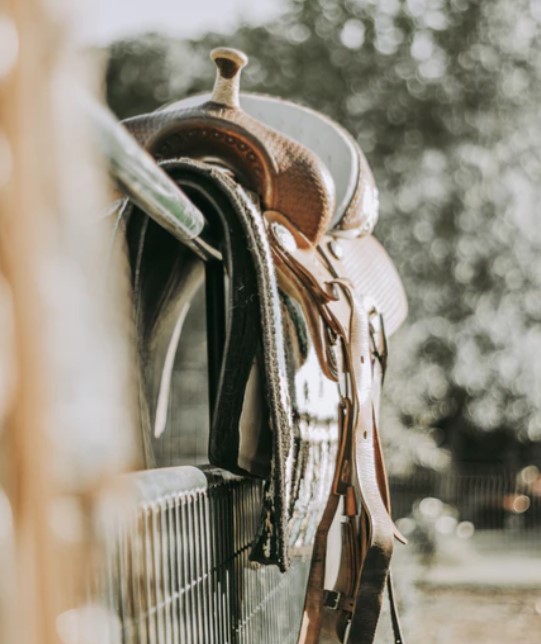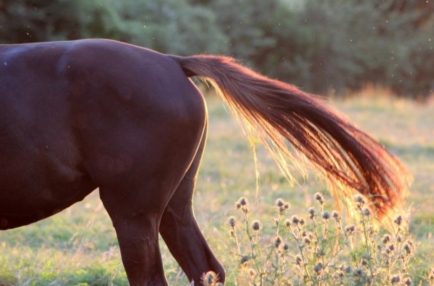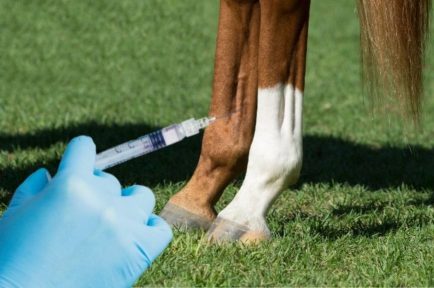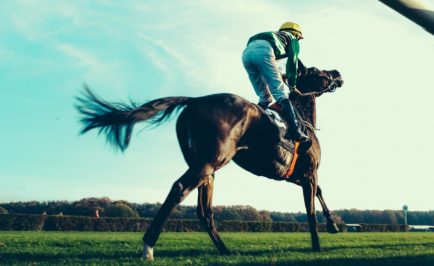You’ve heard the old adage, “If a horse can get hurt he will.” Nowhere is there more opportunity for injury and emergency situations than on the trail. With a little planning and a well-stocked saddlebag, however, you can handle most minor circumstances. And, if an emergency occurs, you and your horse have a better chance of reaching safety. To help you hit the trail prepared, I’ve compiled a list of my personal saddlebag components, plus handy items to include if there’s room. Keep in mind that “first aid” is just that – basic care given at the scene until more extensive measures can be taken. I’m a minimalist: I don’t overload a horse with heavy saddlebags. Instead, I take only what I need to survive until I reach the trailer.
Packing Perspective:
I stock three first-aid kits: One is marked with a red-cross symbol and contains first-aid essentials I pack on the trail. The other kit is an extensive collection of first-aid items for eye injuries, serious wounds, etc., which I leave in the trailer. In case there’s room for more items, I pack a nice-to-have bag, filled with helpful yet nonessential items. Keep in mind that if you’re lost or injured in a nearby forest, you’ll probably be found within 24 hours, although being lost or severely injured in remote, mountainous areas might mean surviving for days. In the latter case, the first item of survival gear is a knowledgeable guide with an extensive pack list and medicine chest.
Basically, deciding what to pack in your saddlebag is a matter of personal preference and necessity. Here I focus on what I consider essential and nice-to-have items for a day ride. Remember: I take a minimalist approach; you might require more.
Saddlebag Essentials:
- Disposable elastic bandages: Stop bleeding long enough to return to the trailer, plus seal and protect wounds, and help keep them clean. Because bandage adheres to itself, it doesn’t require pins or tape.
- Wound powder: Sprinkle powder on wounds to help clot minor bleeding.
- Nonstick gauze pads: To clean or cover wounds, or to apply pressure to bleeding areas.
- Feminine-hygiene pads: To stop bleeding from gunshot or other wound.
- Water: Most backcountry trails don’t have potable water for humans.
Nice-to-have items:
- A small rasp: To bevel a splitting hoof.
- Nippers: To pull a mangled shoe or to trim a splitting hoof.
- Needle-nose multipurpose tool: Offers several handy tools in one unit to pick feet; relace and repair broken tack; cut branches, vines and wire; tighten tack screws and more.
- Benedryl liquid in a calibrated bottle and bee-sting or allergy medication: To relieve insect bites, bee stings and allergy attacks.
- An extra set of reins: Carry in case a pair breaks and to use as a tourniquet in a pinch.
- Flashlight: You need this if you horse becomes injured or you become lost after dark. It might be wise to pack an extra set of batteries, too.
- Pocketknife: Make sure it’s sharp to cut rope in case your horse becomes tangled.
- Cell phone: Check for coverage in the area you’re riding. If not, save that space for another item.
- Rain gear: Include a slicker and hat cover.
- Insect repellent: Pack horse and human varieties for pest protection.
- Antacid and pain reliever: To prevent pain, discomfort and inconvenience along the trail.
- Compass and topographic map: If you know how to use these tools, they can help prevent you from getting lost.
- Antiseptic spray: Use to help prevent infection in minor scrapes and wounds.
- Disposable wipes: Clean scrapes, burns, tears, etc., and are useful for other personal-hygiene needs.
- Nonperishable food: Trail mix and jerky are compact, nutritious choices. My group doesn’t leave home without Tootsie Roll Pops.
- Temporary shoe: Although I haven’t found the ideal slip-on plastic shoe, some riders have had good luck substituting duct tape for an Easyboot.
Items in case you get lost:
My first suggestion: Look at maps and plan your route so you don’t get lost. Consider the orientation of major rivers, ridges and roads. As you ride, note the lay of the land, rivers and ridges. If you become disoriented, consider backtracking. Once you realize you’re hopelessly lost, don’t expend energy going around in circles. Remain in an area where you can be seen. Listen for a search party and be ready to signal for help. Items you may wish to carry include:
- Matches and fire starter: Store in a plastic bag so they stay dry. Be careful not to start a forest fire.
- Whistle: Blow to call for help.
- Signal mirror: Learn how to signal for help ahead of time.
- Space blanket: Provides warmth. Plus, it also makes an excellent signaling device due to its reflective quality.
- Iodine tablets: To purify stream water.
- Freeze-dried rations: Mix with water for a meal.
Original article : Saddlebag Checklist – Western Horseman
www.royalequestriancollection.com – check our website to purchase and enjoy our products for your horses and you.



























